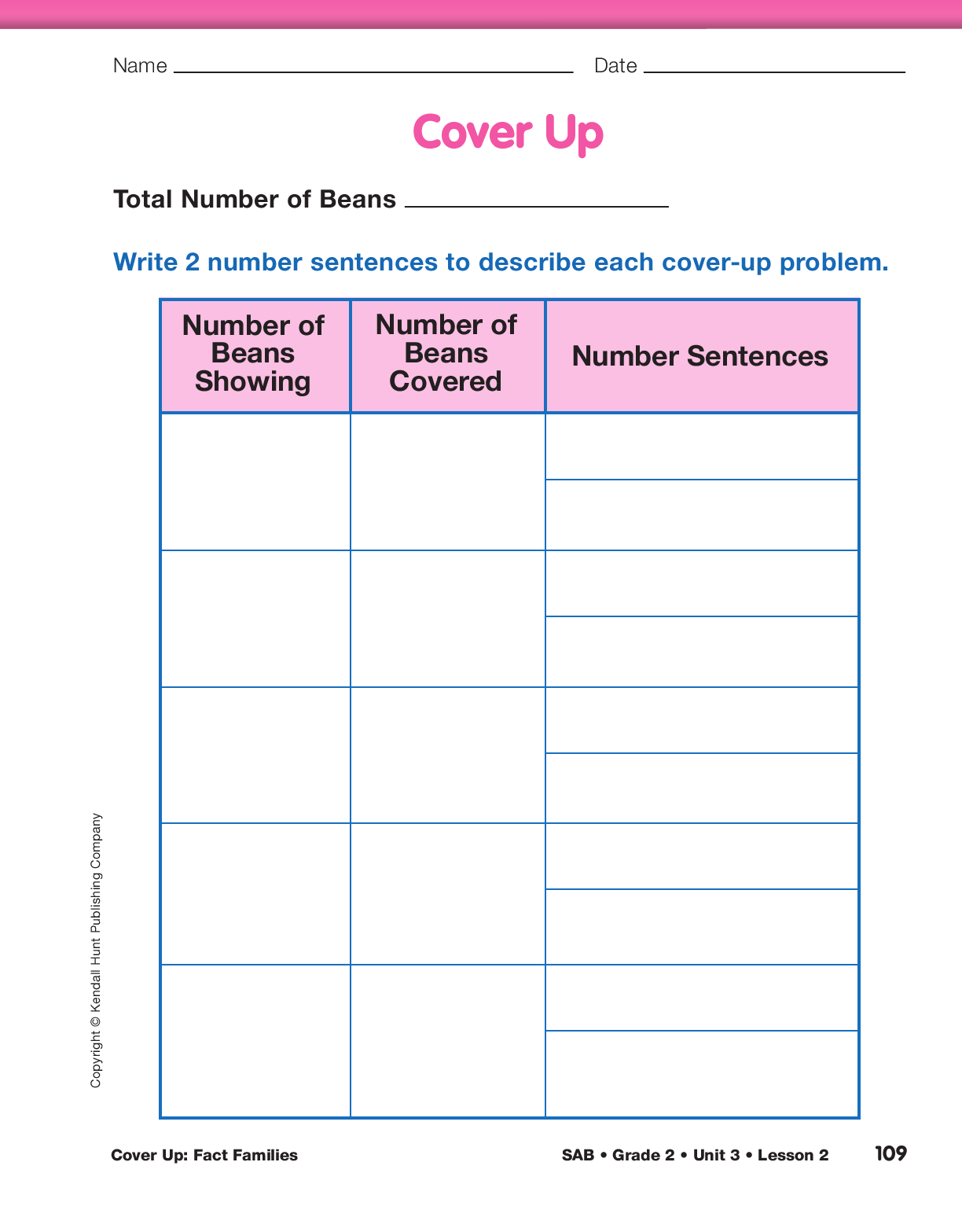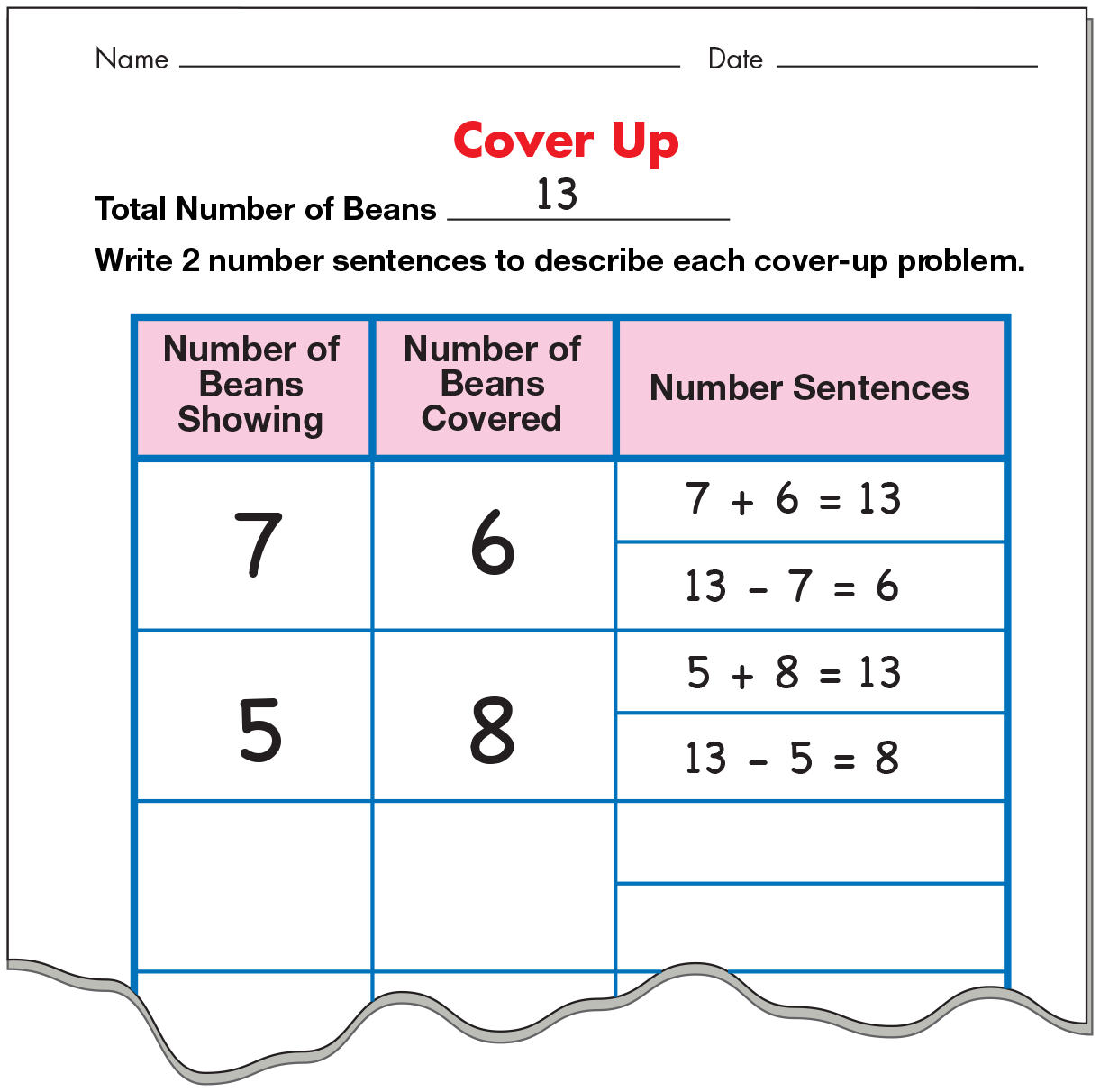Cover Up: Fact Families
Est. Class Sessions: 1Developing the Lesson
Solve a “Cover-Up” Problem. Display 10 beans. Ask students to count the beans. Cover up several beans. Make sure students do not see how many you cover. Ask students to determine the number of beans you have covered by looking at the beans that are left over. Students can use a variety of strategies to solve this problem. For example, if seven beans are left, a student might use the counting-up strategy to determine the number hidden. Other students may choose to use their desk number lines or other manipulatives to count back. See Figure 1.
Ask students to share their strategies. As students volunteer their strategies, ask other students to explain the same strategy in their own words.
After students share their solution strategies, ask them to describe the problem with a number sentence. Write the number sentences in a column on the board or other display. Ask students for more than one number sentence. For example, one student may suggest 7 + 3 = 10, while another gives 10 − 3 = 7.
Write both on the display and ask:
Ask volunteers to tell a story for 10 − 3 = 7 and 10 − 7 = 3 using beans and then ask students to show how to solve these problems on the class number line.
Then use the following prompt to help students confront common mistakes when writing fact families:
Add 3 − 7 = 10 and 7 − 10 = 3 to the display in a second column next to the other four previously written then ask:
Pose several other cover-up problems covering up different numbers of beans. Each time, ask students for all the number sentences in the fact family and write them on display.
Demonstrate and Play Cover Up. Display the first
page of the Cover Up pages in the Student Activity
Book. Distribute
20 beans to each student pair.
Students should record the total number of beans
they are using at the top of the Cover Up page. They
can use any number they choose from 9 through 20.
Encourage students to take turns being “Hiders” and
“Detectives” in a game of Cover Up. One student
hides a number of beans while the other tries to
determine the number of beans covered. Both students
record the number of beans showing and the
number of beans hidden on their Cover Up page.
They write a number sentence for each problem and
then write a different number sentence that is in the
same fact family. Use the display to demonstrate a
round. See Figure 2.
While students play Cover Up, observe the use of various solution strategies. Elicit other number sentences that describe the same problem. Encourage students to repeat the game by choosing a different starting number. A second game page is provided.
















